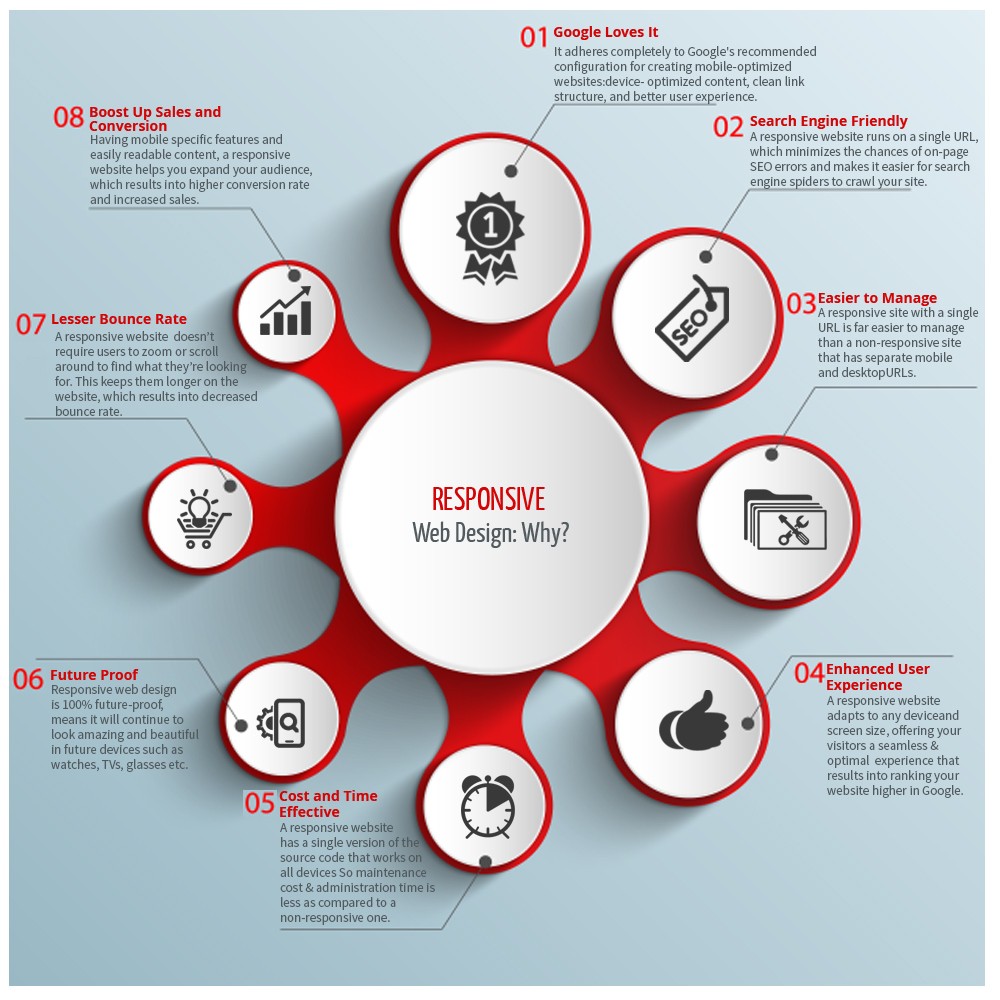Annoyed With Slow-Moving Loading Times And Confusing Navigation? Discover Exactly How Receptive Style And Optimized Page Rate Can Enhance Your Internet Site'S User Experience
Annoyed With Slow-Moving Loading Times And Confusing Navigation? Discover Exactly How Receptive Style And Optimized Page Rate Can Enhance Your Internet Site'S User Experience
Blog Article
Article Developed By-Conway Williford
Have you ever before went to a website that took permanently to tons, had a confusing navigation system, or didn't display correctly on your mobile device? Opportunities are, you promptly abandoned that website and moved on to one that offered a far better individual experience.
In today's affordable on the internet landscape, it's essential for businesses to prioritize web design that boosts individual experience in order to drive better conversions. In this conversation, we will explore the relevance of responsive layout, the use of instinctive navigating, and the optimization of web page tons rate to develop a seamless and interesting user trip.
Keep tuned to discover just how these components can significantly impact your web site's success.
Relevance of Responsive Style
Receptive design is crucial in today's digital landscape for producing internet sites that adapt effortlessly to different screen sizes and gadgets. When your internet site is responsive, it automatically adjusts its layout and material to fit any type of device, whether it's a smartphone, tablet computer, or desktop computer. This is vital because an increasing number of individuals are accessing the web through their smart phones.
If Click Link isn't responsive, it can lead to a poor customer experience. Users might have to pinch and zoom to review web content, switches might be too tiny to click on, and pictures might not be maximized for smaller sized displays. This can annoy individuals and bring about high bounce rates and low conversions.
Using Instinctive Navigating
When creating a responsive internet site, it is essential to concentrate on using user-friendly navigating for an enhanced user experience.
Instinctive navigating refers to arranging your internet site's food selection and navigation elements in a rational and straightforward way. By doing so, you make it simpler for site visitors to discover what they're looking for and navigate via your web site effortlessly.
User-friendly navigation helps in reducing confusion and disappointment, ultimately causing better customer engagement and raised conversions.
To achieve user-friendly navigating, take into consideration using clear and descriptive labels for your food selection things, carrying out a constant format across all pages, and incorporating search functionality for fast accessibility to particular material. Additionally, it's important to focus on essential pages and information, ensuring they're plainly shown and easily available.
Optimizing Page Lots Speed
To improve individual experience, it's essential to maximize the page lots speed of your site. Sluggish filling times can frustrate customers and result in greater bounce rates.
Luckily, there are numerous strategies you can apply to boost your internet site's tons rate. To start with, think about reducing web accessibility compliance of your images by pressing them without endangering high quality.
Additionally, maximize your code by minimizing unneeded manuscripts and CSS files. An additional effective method is to take advantage of web browser caching, which permits particular components of your internet site to be saved locally, reducing lots times for returning site visitors.
Moreover, take into https://affiliate-marketing-for-m54208.theobloggers.com/36394606/just-how-to-create-a-winning-content-advertising-method using a material shipment network (CDN) to disperse your site's documents throughout multiple web servers, enhancing load speed for individuals in different geographical areas.
Conclusion
To conclude, by using receptive style, intuitive navigating, and enhancing page tons speed, website design can substantially improve customer experience and drive far better conversions.
With a straightforward interface, easy navigating, and quick packing times, websites can catch and maintain the interest of users, resulting in increased interaction and greater conversion rates.
So, do not postpone in implementing just click the following web page to make sure a seamless and effective individual experience!
